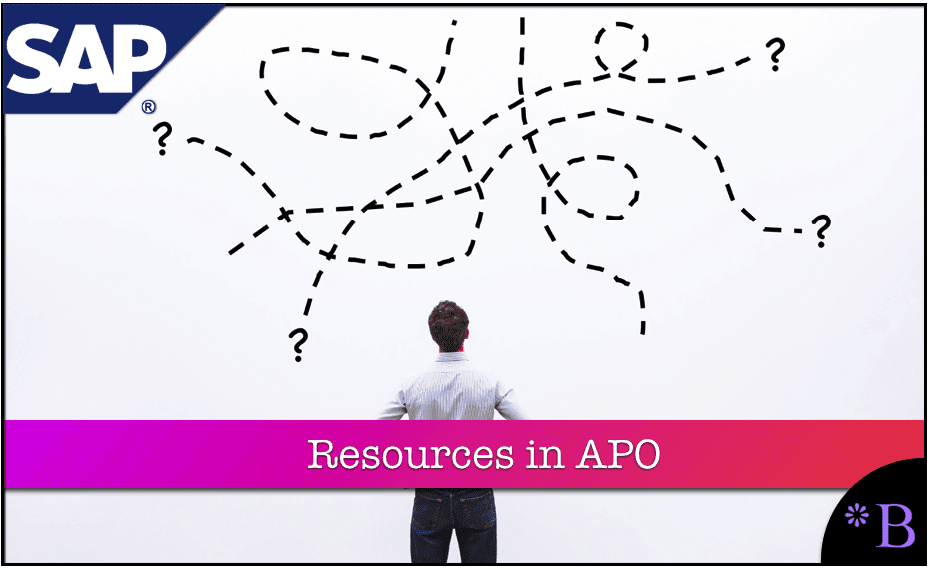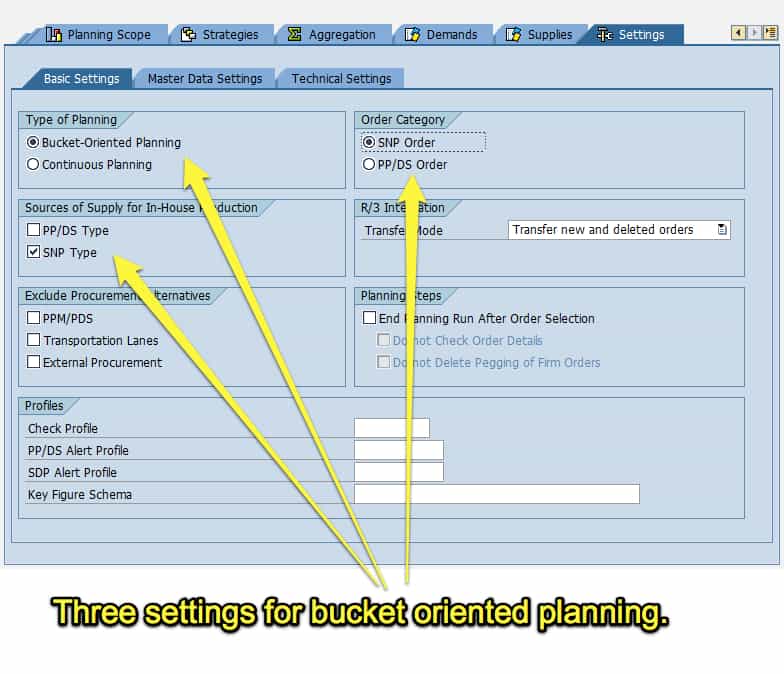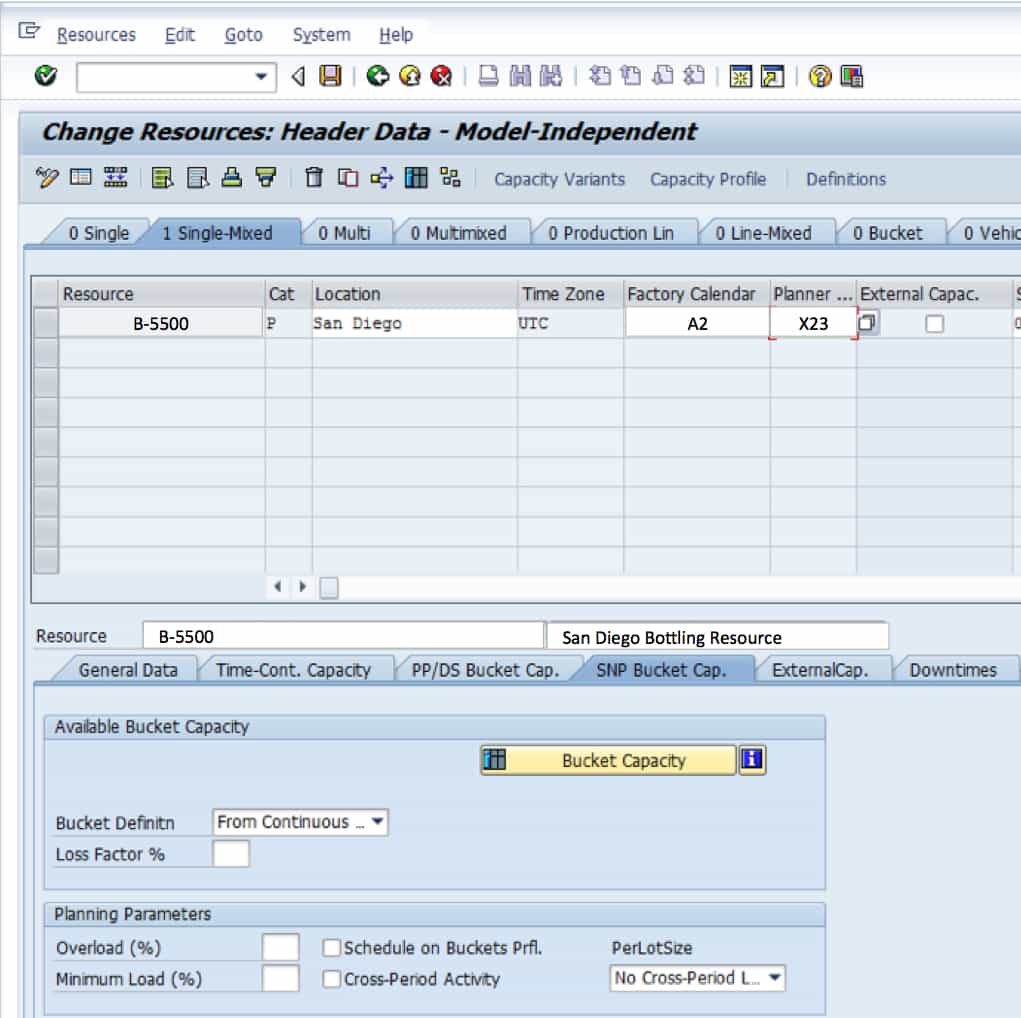How to Share Resources Between SNP and PP/DS
Executive Summary
- APO has shared resources between SNP and PP/DS, which is called the mixed resource.
- There are critical differences in assumptions between SNP and PP/DS.
- In this article, we compare these two applications to how another application manages shared resources.

Introduction
In the vast majority of cases with APO, SNP, and PP/DS share the same resources.
However, they are used differently in each application.
The major difference is the time aspect of the resource.
Our References for This Article
If you want to see our references for this article and other related Brightwork articles, see this link.
Notice of Lack of Financial Bias: We have no financial ties to SAP or any other entity mentioned in this article.
Use of the Mixed Resource for Resource Sharing
There are several resource types in APO, and for both SNP and PP/DS to use a resource, it must be a mixed resource.
This is explained in the quotation below:
“If you want to consider the resource loads caused by PP/DS orders in SNP planning, and adjust the SNP planning accordingly, you must use mixed resources (single-mixed resources or multi mixed resources). In mixed resources, you define the bucket capacity for period-oriented planning in SNP and the time-continuous capacity for time-continuous planning in PP/DS. An SNP order utilizes the bucket capacity of a mixed resource and a PP/DS order utilizes the time-continuous capacity of a mixed resource. For SNP planning, the amount of bucket capacity utilized by PP/DS orders is displayed as an aggregated capacity requirement. SNP planning can therefore take account of the PP/DS orders. For PP/DS planning, the time-continuous capacity used by SNP orders is not displayed.” – SAP Help
Supply planning in APO, in SNP, is generally set to bucket oriented planning, while PP/DS is set to time continuous planning.
This is shown in the screenshots below:

This is a tab on the resource populated for how APO will treat the resource for any time continuous applications. PP/DS generally uses this tab because it is the most detailed.

However, the same resource can also have SNP Bucket Capacity Tab populated, which determines how SNP uses the resource. A bucket is a more aggregated way of dealing with the resource.
Therefore, APO’s multi mixed resource functionality allows both SNP and PP/DS to use the same production resources but deals with the resource differently from a time dimension. More on this is available in the article.
It should be noted that this only applies to production resources. Resources such as storage, transportation, and handling units cannot be represented in PP/DS and are exclusively supply planning resources. However, the use of any resources aside from production resources in SNP is rare on projects. The article provides some reasons for why this is the case.
The Assumptions of SNP versus the Assumptions of PP/DS
Therefore, the assumptions of SNP regarding production resources are different from the assumptions of PP/DS. The SNP supply plan (which when it uses production resources also creates the initial production plan) should be considered a first cut at the plan. PP/DS needs to perform its more detailed planning and scheduling to result in the final production plan.
This again demonstrates the sequential nature of SNP and PP/DS (which is simply an example of most applications that are not the market).
How Another Application Compares to PP/DS
The application Galaxy APS by PlanetTogether works differently in that it does not have a different resource type and produces its manufacturing and supply planning recommendations in a single pass.
This means less overall processing (as the processing is combined in the PlanetTogether planning run). This is superior to the sequential approach (where supply planning releases its results to production planning) in several ways — one being that a combined run can allow an application to do things like multi plant planning.
Secondly, the supply plan is accurate right off the bat and does not have to be passed to a production planning tool for adjustment. This, of course, naturally raises the question of whether a supply planning application is even necessary. This is because the PlanetTogether APS application functions as both the supply planning and production planning application (as well as ATP application).